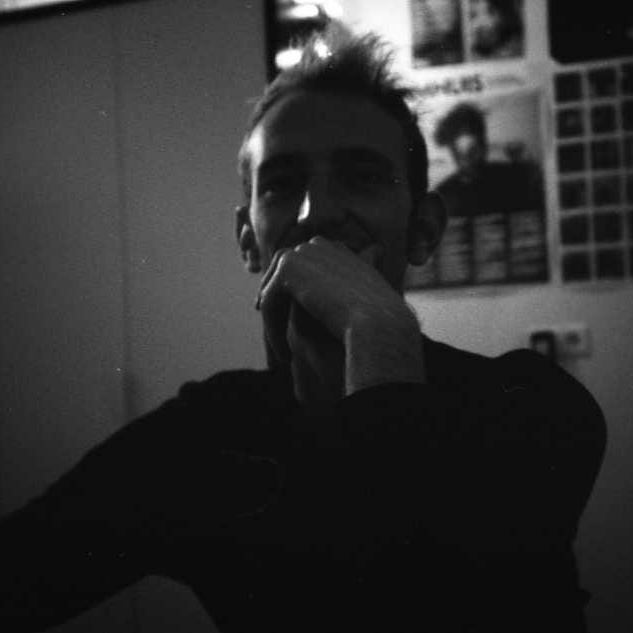Barcelona’s Cultural Confluence: How Migration, Art and Politics Intersect in the Catalan Capital
Barcelona’s rich art scene evolves as contemporary migrant communities shape its identity with new ideas, performances, and life experiences, continually enriching the city’s dynamic cultural landscape.
These official-looking documents have caught my eye at a number of art and book fairs. The covers mimic that of a passport provided by the Republic of Bolivia. Inside there are facsimiles of stamps from border police over watermarks of Tobas dancers and other national icons. But there are also photos of intimate moments, family occasions, and screenshots from a WhatsApp group. And there is a QR code, which leads to recordings from three women - Emma, Gladys, and María Eugenia - who at one point traveled more than 9,000km to find work in Spain.
These “passports” and the accompanying recordings give readers a glimpse into the experience of being a woman migrant seeking civil rights and economic stability. Referring to the acts of solidarity it depicts and the name of the WhatsApp group which inspired it, this project is titled “Ayni,” a Quechuan word meaning reciprocity. It is an artistic project brought to life by the Bolivian-born, Barcelona-based multidisciplinary artist Alejandra Rocabado, who sells them directly. With a background in photojournalism, her work often involves close collaboration and community formation.
Alejandra Rocabado’s “Ayni” project turns passports into narratives of migration.
Alejandra Rocabado’s “Ayni” project turns passports into narratives of migration. [Photos: Alejandra Rocabado]

-

-

-
The faux-passport format frames the shots of everyday life within the embodiment of the byzantine bureaucracy that Europe puts up against migrants, especially those from the Global South. It is an attempt to take control, through recreation and transformation, of an object which both grants and restricts the movement of people; depending on the passport, and the person. It sets these lives within the context of the aesthetic and political connotations which “migration” and “migrant” carry with them, and subverts them through empathy and first-person narratives.
“Ayni” is one of the many artistic projects arising from Barcelona’s cultural ecosystem that investigates migration and the migrant experience. It is an example of the growing relevance in the Catalan capital of topics such as individual and communal identity formation, and the intersection between art, politics and the migratory experience.
Changing Cultures
In February 2017, 160,000 people took to the streets of Barcelona under the banner of “Our Home is Your Home.” Held in the context of the ongoing Syrian civil war, the protestors were pressuring the Spanish government to achieve its pledge to welcome 17,000 refugees. It was one of the biggest marches of its type in Europe, and marked Barcelona as a European city open to new arrivals at a time when much of the continent was becoming more actively hostile.
Given recent regional election results in which nativist parties grew in popularity, the extent to which this sentiment remains popular is debatable. Nevertheless, in the intervening years, the city’s cultural life has become increasingly impacted by its migrant communities and their struggles and perspectives: securing their rights; working conditions; racial and religious discrimination.
The annual #MigrantAction Festival, which will return to Barcelona in June 2024 under the heading “Whose Popular Culture?”, is a prime example of the intersection between the city’s cultural life, artistic scene and its multicultural status. The event, taking place at Fabra i Coats, an ex-factory which has been renovated into an events venue and cultural space, will feature artists, academics and activists who will discuss the degree to which “non-institutional” cultural and religious expressions receive support from the city council, regional government, and their cultural institutions, and how "popular culture" and "interculturality" are expressed more generally.
During the 2023 edition, cultural workers drafted 12 proposals for a more inclusive cultural sector. Among them were demands for assistance to regularize migrants working in the cultural field, encourage multilingualism, and increase support for active cultural initiatives being run by migrants and migrant communities. The 2024 edition will seek to build on this foundation and continue to grow the scene’s support networks.
Migration and Barcelona Today
In 1998, 3% of the Spanish population was foreign-born, today 16% are. By and large, new arrivals have become part of the country’s working class: in 2000, 31.8% of domestic and care workers were immigrants, by 2017, this had risen to 63.1%. Sociologists describe Barcelona as always having had a “multicultural reality,” and the city outperforms the national picture. Following a century of mostly domestic migration, today 23.6% of the city’s population have been born outside of the country, within which 177 nationalities are represented. The ongoing upward curve of migration coincides with the controversial mass tourism boom that the 1992 Olympic Games kickstarted.
“Topmanteros” is the slang name for the street vendors, usually from West African nations, who sell branded clothing transported by blanket, often along the city’s famous Rambla. Due to being “paperless” they are unable to enter the formal economy. In 2015, a number of them formed the Popular Union of Street Vendors. This union campaigns on behalf of its members, and has since expanded into clothes production and opened its own shop.
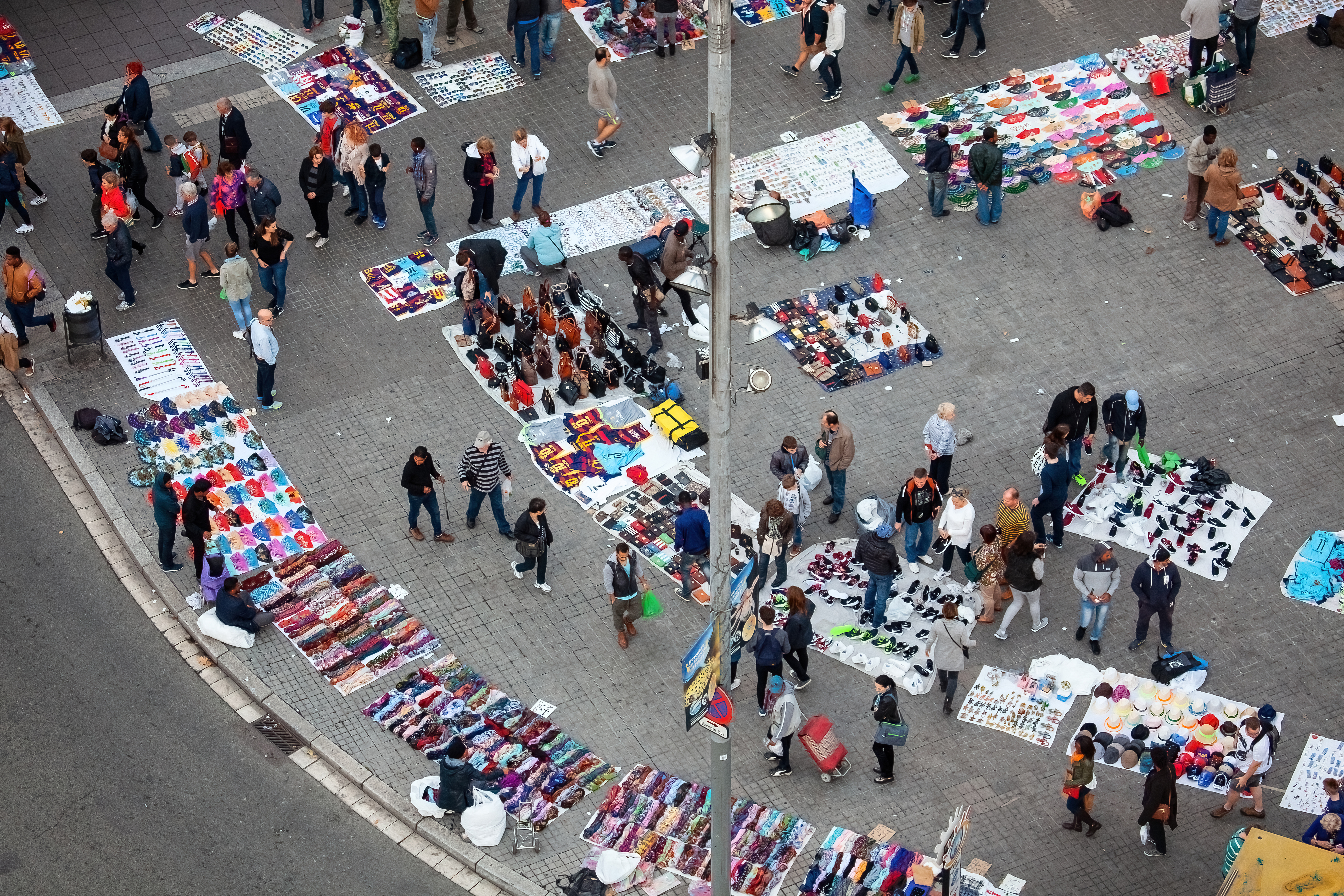
Birute Vijeikiene
Among other things, the Union is a platform from which people can share their experiences of the often dangerous journey from Africa to Europe, and their reasons for having done so. These efforts hit against the trend that, over recent years, Catalonia has become more amenable to fear mongering around undocumented migrants, those who live in a civil rights purgatory. The images of small boats crossing the Mediterranean have become representative of this sort of migratory pattern.
In 2023, members of the Union, often known as Top Manta, the brand name of its clothing range and store, collaborated with architectural firm Leve Productora to produce Catalonia and the Balearic Islands’ entry to the Venice Biennale, an annual international cultural exhibition. The purpose of the installation was to get people to “rethink architecture from the perspective of an African immigrant.” The installation was divided into two sections: the first told the migration story of someone travelling from West Africa to Europe; the second was a “reparation workshop,” which suggested ways underused and abandoned buildings within the city could be repurposed to benefit its disadvantaged communities. The collaboration also resulted in a striking T-shirt design that reimagines the Flag of Europe as a crown of barbed wire, a reference to physical border infrastructure such as that at Melilla, a Spanish enclave in North Africa.
This was not the only time in 2023 that an institutional cultural event promoted ideas of intercultural exchange and solidarity. Also that year, Kyiv was the officially invited city to Barcelona’s annual autumn festival La Mercè. This invitation - which followed the grant of over 200,000 temporary permits to those fleeing the war in Ukraine - meant that Ukrainian folk dancers, a film program, musicians and circus artists were featured alongside the standard program throughout the celebrations.
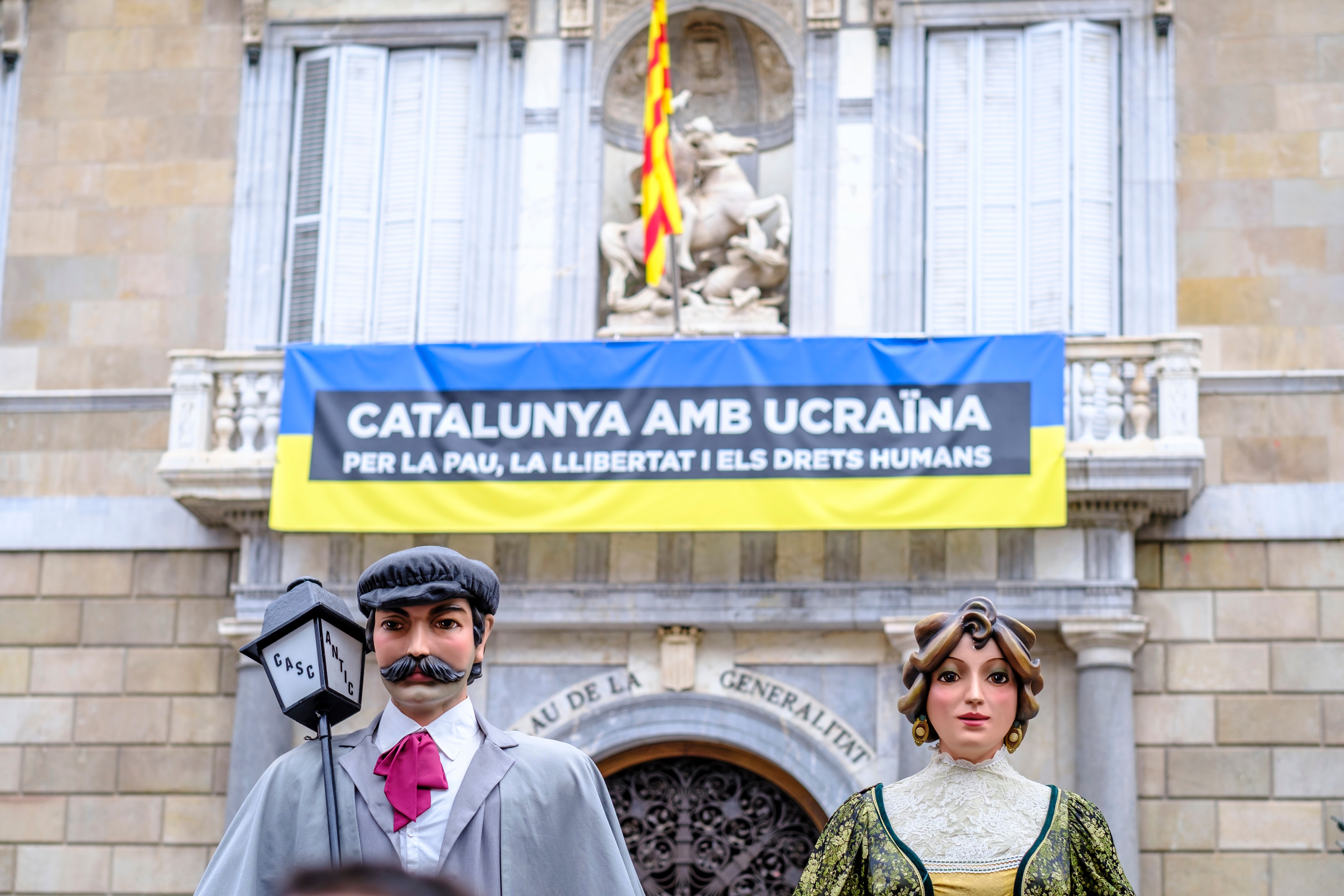
Shutterstock
Art and “Metropolitan Perceptions”
The intersection between migration and contemporary arts and culture is well established. In the late 1980s, cultural historian Raymond Williams described in his essay on “metropolitan perceptions” how European Modernism was inextricably linked to migrant communities in cities like Paris. Barcelona was also part of this story: Picasso was born in the south of Spain before training in the Catalan capital. Later on, Nazario arrived from Andalusia and would soon become the enfant terrible of post-Franco Spanish comics.
Boris Mercado is a Peruvian photographer who collaborates with many other migrant artists in the city. He is also involved in a project with Fundación Suñol in which photography is used as a vehicle to discuss migration in schools. He tells me that “migration is not always the content of our work - but it is the shared experience which brings us together.”
Having said that, there are some recurring themes in the work made by individuals and collectives in this orbit of activity. This includes, among other things, critiques of who counts as being barcelonés, acts of community formation, highlighting the ongoing impacts of European colonialism, demonstrating solidarity with Global South civil rights movements, and shining a light on the inequities and discriminations that migrant communities face.
There are dangers to being an outsider who challenges the dominant culture. This is exemplified by the case of Daniela Ortiz, a celebrated multimedia artist from Peru, whose murals and installations are closely tied to progressive social and political activism. She fled Barcelona after thirteen years in Spain following a campaign of hate against her due to her anticolonial political views.
Artist Projects and Festivals
“108 Days” was an evolving exhibition of interventions and installations recently hosted at the MACBA, the city’s contemporary art museum, famous for being the backdrop to one of Europe’s most famous skateboarding spots, the Plaça dels Àngels. An exemplary demonstration of the interest in platforming a variety of voices and visions and putting them in dialogue with each other, artist and host Lydia Ourahmane invited tens of artists to participate over the show’s running time.
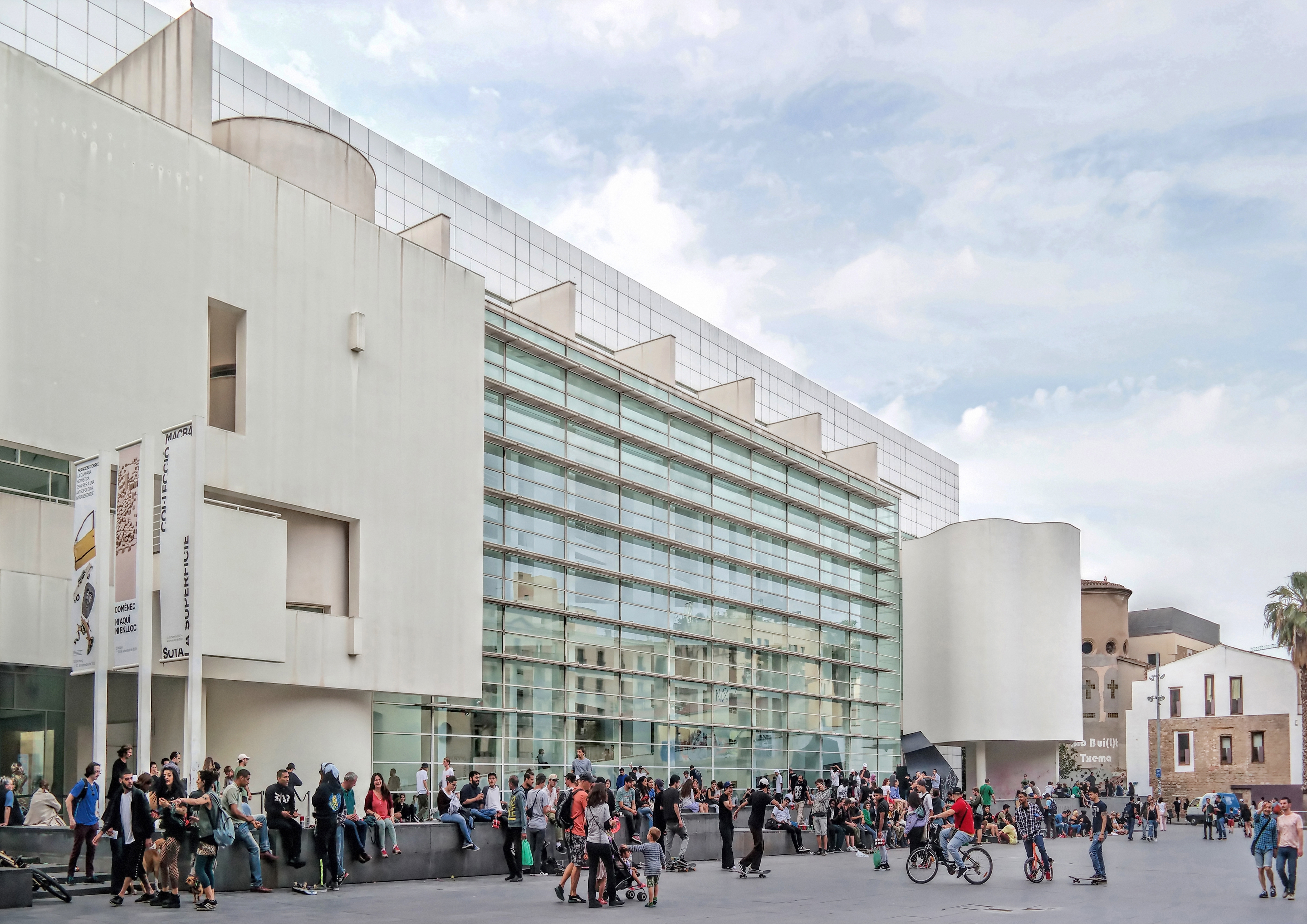
Berk Ozdemir
Amongst the many interventionists were artists and activists originating from countries as dispersed across the globe as Iran, USA, Palestine and Argentina. The themes of the interventions ranged from discussions around the ongoing war in Gaza, to issues related to climate change, and reflections on the museum’s relation to the communities it neighbors.
The aforementioned Boris Mercado is a founder of Mitmaq_Ediciones, an independent publishing project that supports photographic projects by immigrant artists. Mitmaq_Ediciones is an excuse for him to continue his passion for photography. It is also a way to build a support network of photographers and artists, and a way to develop collaborative projects. Boris tells me that “part of this project’s work is about creating a space where artists from Latin America can build their own projects, without expectations. This helps to empower us as artists.” He continues, “Mitmaq has been a way to meet others in similar positions, and with them you learn about opportunities for work, obtaining funding, new skills, and sharing ideas.”
Jiser is a cultural association dedicated to cultivating intercultural dialogues and highlighting the historical connectedness of Mediterranean societies. Alongside a wide network of local organizations, it co-hosts lectures and conferences and runs residency opportunities which bring Barcelona’s arts scene into dialogue with visiting artists from North African countries.
Under the project title Mural/Local, Jiser invites an artist annually to paint the mural on the patio wall of a space in Barcelona’s Poble Nou district. 2023’s mural was painted by Algerian artist Oussama Harrachif, who describes it as “a representation of the idea when a person is struggling with the outside world, feeling not accepted or understood and so chooses silence as a refuge and a way to be prepared to confront the world.”
Manifesta is a “nomadic” arts biennial whose 15th edition will be taking place in twelve locations throughout the Barcelona province in the autumn of 2024. The festival has been working with regional stakeholders over the past three years to research and build a program that responds to a series of urgent questions related to building “a more just and sustainable future.”
The Manifesta 15 Barcelona Metropolitana team says that the “participants don’t simply offer observations; they propose proactive ways to empower local communities. Their work aims to foster active participation within surrounding environments, creating a deeper connection between people and the places they inhabit.” For example, Safura Adam’s “Black Archives” will find the artist “revisiting collective memory through exhibitions, podcasts, and research materials” in order to “bring to the surface the silenced stories of resilience of marginalized groups while highlighting alternative forms of community healing.” Other participants include Jokkoo Collective, a Barcelona-based multidisciplinary collective composed of people from the African diaspora best known for its musical output.
Culture on the Streets
The idea of a cohesive “migrant experience,” and a subsequent “migrant aesthetic,” is illusory. As well as their continent and country of birth, a migrant’s experience will depend on their gender, race, familial ties to their destination, age, etc. Each instance of a work that investigates migrant identity and politics, or is produced in this intersection, will reveal universal aspects of these experiences but also the specificities of the person producing the work, or whoever they are producing work about.
Barcelona’s position in the Mediterranean and its historic role in globalization means it will continue to be a magnet for people from around the world. The art and cultural practices those arrivals produce tell us about the sort of metropolitan perceptions generated through the migratory patterns which are shaping the city today.
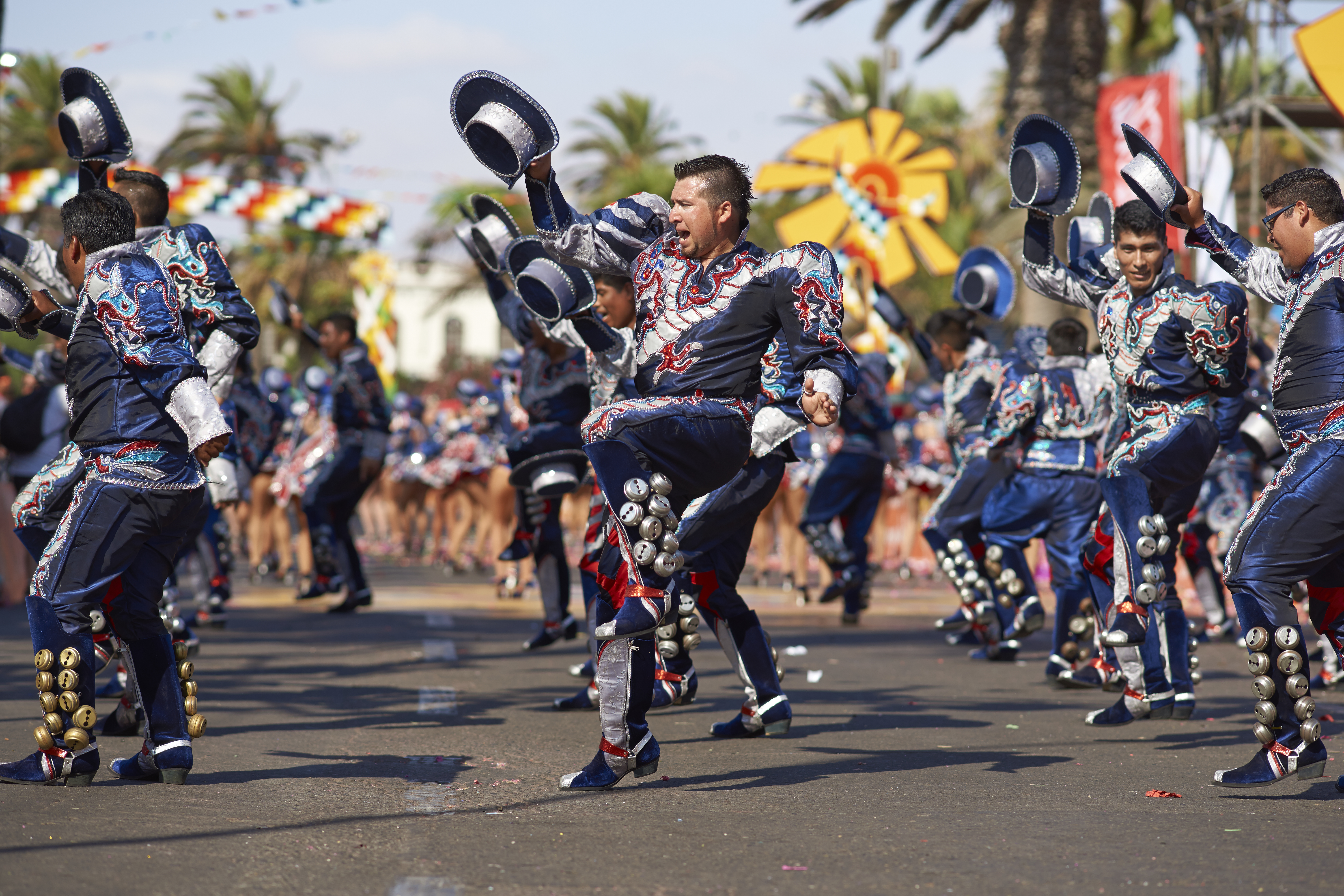
Jeremy Richards
In parts of Barcelona where the pavement is very wide, such as near the Estacio de Sants, there are often groups rehearsing Caporales, an Andean dance tradition rooted in European and African migration to South America. Witnessing these rehearsals is an important reminder that cultural exchange is cyclical, and that white cubes don’t have a monopoly on cultural life: it still lives and evolves on the street.
What To See Now
Manifesta 15 will be taking place at a number of sites within Barcelona and the surrounding area throughout the Autumn of 2024. La Mercè is a citywide event that takes place every September. You can visit the Top Manta store in the Raval neighborhood, where you will also find the MACBA. A metro ride away in San Andrés de Palomar, Fabra i Coats often hosts events and exhibitions, as is, less regularly, the Jokkoo Collective's cultural space FOC. Jiser announces activities, residencies and events throughout the year, as does Mitmaq. Caporales performances can be found throughout the city, but especially during Carnival.
